Carnot MICA Projects
ENDLESS
Scientific leader IS2M : K. Mougin
Development of an intensified process for the continuous flow production of hybrid microparticles (polymer / metal nanoparticles) with chromic properties
January 2022 – December 2024
This project aims to develop an intensified process, in continuous flow, allowing the production of hybrid polymer/metallic nanoparticle microparticles in a single step. This process incorporates elements of microreaction (micromixers and microreactors), microfluidics (droplet generator) and photo-induced reactions (reduction and hardening) in order to produce monodisperse microparticles of perfectly controlled size and diameter (100-800 µm) . For example, this demonstrator aims to produce hydrophilic microparticles with chromic properties using gold nanoparticles. The arrangement of the two reactions in the flow line will be particularly particular depending on whether they take place sequentially or concomitantly. In the first case, the metallic nanoparticles (20 nm) will first be synthesized from the continuous mixture of precursors and their online photo-reductions ; then incorporated into the droplets of compounds before their photo-polymerization under flux. In the second case, the mixture of precursors will be introduced into the droplets and the photo-reduced ones at the same time as the will be deactivated by UV irradiation at the same wavelength.
These microparticles, due to their metallic core, have specific optical properties, in particular mechanochrome properties as soon as they are inserted into a polymer matrix. These properties will be studied and applications in the field of photopolymerizable inks and resins are directly targeted.
COSSU
Scientific leader IS2M : K. Mougin
January 2022 – December 2024
This project proposes to design 3 composite eco-materials with added value and low environmental footprint, and to implement them according to original technologies developed at Cetim Grand Est, on the scale of a pre-industrial pilot.
It aims, with the support of IS2M, to explore a mode of chemical compatibility between reinforcement(s) and matrix(es), and to study the morphological structure, the physico-chemical properties as well as different technical characteristics (mechanical properties, formability, durability, etc.) of eco-materials intended for different applications and markets. Mastering the variability of the materials necessary for their production is an integral part of the project.
Beyond the technical and economic aspects studied, the environmental performance of eco-materials will also be assessed, mainly through appropriate methodological tools.
The level of maturity reached by these products must be high enough to consider validating this approach in partnership with one or more manufacturers looking for alternatives to traditional materials.
RPolyDepoly
Scientific leader IS2M : J. Lalevée
January 2022
The intensive use of plastics is accompanied by their accumulation in the environment. In order to limit the waste associated with this industry, it is necessary to review the life cycle of these polymers or to turn to biodegradable materials. To facilitate this transition, irradiation techniques offer many advantages. Depending on the type of radiation, the doses delivered and the irradiation conditions, it is possible to synthesise polymers, to reinforce materials with lesser properties, such as biodegradable ones, but also to degrade them, which can favour depolymerisation. In this project, two materials will be studied, a PMMA and a cellulose-based biodegradable. UV and ionising radiation treatments will be used for material synthesis, reinforcement and degradation. The impact of combined ionising and photothermal radiation treatments on the depolymerisation of the materials will also be evaluated.
PYRAMID
PYRolysis, Anaerobic digestion and MIcroalgae cascaded Development for sustainable valorization of agro-industrial wastes in the concept of circular economy.
Scientific leader IS2M : S. Bennici
1/01/2021 – 31/12/2023
The integration of anaerobic digestion and pyrolysis is a new concept appearing in recent years and that gain the researchers’ interest, even if international scientific projects on this topic are still rare. Anaerobic digestion is a promising technology that converts organic matter into biogas, and into a residual material called digestate. Pyrolysis is a thermochemical process that converts organic matters (among them the solid digestate coming from the anaerobic digestion) into added value products that can be found in the gas phase (syngas, mainly CO2, H2 and CO), in the liquid phase (bio-oil), and in the solid fraction (biochar). Biochar can be further activated into activated carbons (ACs) and can be then used as adsorbent, in agronomy, and in several processes related to the anaerobic digestion process. In the PYRAMID project, several synergies and complementarities among anaerobic digestion and pyrolysis will be highlighted by using a cascaded approach (closed loop), in which the products from pyrolysis (syngas, bio-oil, biochar) are used to implement the anaerobic digestion process and related applications. PYRAMID will also investigate the co-pyrolysis of renewable biomasses and solid phase of digestate. Two kinds of solid phase digestate will be tested ; those obtained by conventional anaerobic digestion of organic matter, and those obtained starting from a mixture of organic matter and activated carbons.
STOCKENER
Thermochemical Energy Storage on « salt/carbon supports » composites
Scientific leader IS2M : S. Bennici
1/11/2019-30/10/2022
In order to achieve energy independence and reduce greenhouse gas emissions, the substitution of conventional energy sources for clean and renewable energy sources such as solar is needed. However, the intermittent nature of this energy is an important issue and requires the presence of a system to store the excess energy, when the resource is abundant, for use when needed. Such a system can reduce the time mismatch between resource and energy need. The research of new storage systems based on the use of innovative storage materials is necessary. In this project, composites based on carbon supportd and salt hydrates will be developed in order to increase the energy density of a heat storage system of thermochemical type. STOCKENER will cover the entire heat storage process, from the preparation and characterization of the composite materials to their application in a semi-pilot system.
